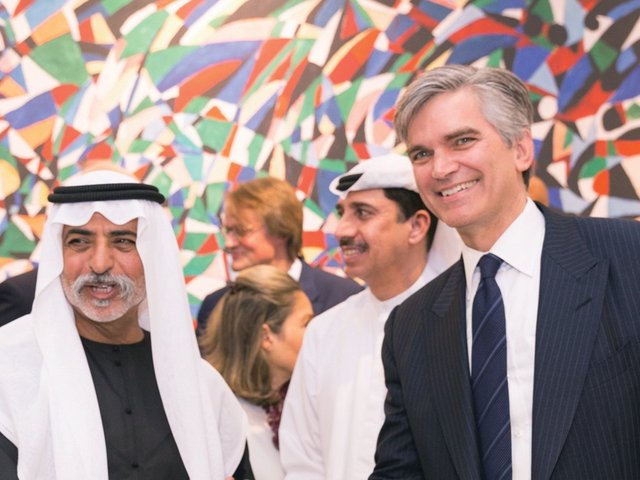In 2006, Christie’s held its first sale in Dubai and it was a game-changer. Much to the surprise of everyone locally and in the West, it made $8,489,400. Suddenly, people in the Gulf realised that art could be a serious business, while Westerners were inspired by this, and the great museum projects in Abu Dhabi, to consider the region as new territory for expansion.
Looking back at the auction house’s beginnings in Dubai, William Lawrie, the then director of contemporary Middle Eastern and Iranian art at Christie’s, and now co-founder of Lawrie Shabibi gallery, says that Christie’s had never intended to start auctions in the region. “The original plan was to have a representative office and host exhibitions twice a year to funnel new buyers from the UAE to the salerooms in London or New York,” he says. At the time, Christie’s had almost no contacts in the wider Middle East and it seemed risky to open a saleroom, but key members of the team were confident in Dubai’s potential. “In 2005, it was like a gold-rush village. There was development all over and every month I visited there were new places I didn’t recognise. It was speculative, it felt as though everyone was getting behind it, and it fuelled optimism,” Lawrie says.
Ten years on and post-financial crisis, Dubai is less exuberant but Christie’s has made its mark on the cultural scene. “There is now a thriving market for contemporary Middle Eastern art in the galleries and fairs, and I think this commercial interest has promoted interest in the art history of the region,” Lawrie says.
At its sale on 16 March, Christie’s is offering 125 works, with a specialised section of 40 pieces by leading Middle Eastern artists. The highlight is an 11m by 3m triptych entitled Sarajevo (1992), by the Egyptian artist Omar El-Nagdi, estimated at $400,000-$600,000.
• Christie’s Dubai: Modern and Contemporary Art sale, 16 March, 7pm (public preview exhibition, 13-16 March), Jumeirah Emirates Towers Hotel, Dubai



